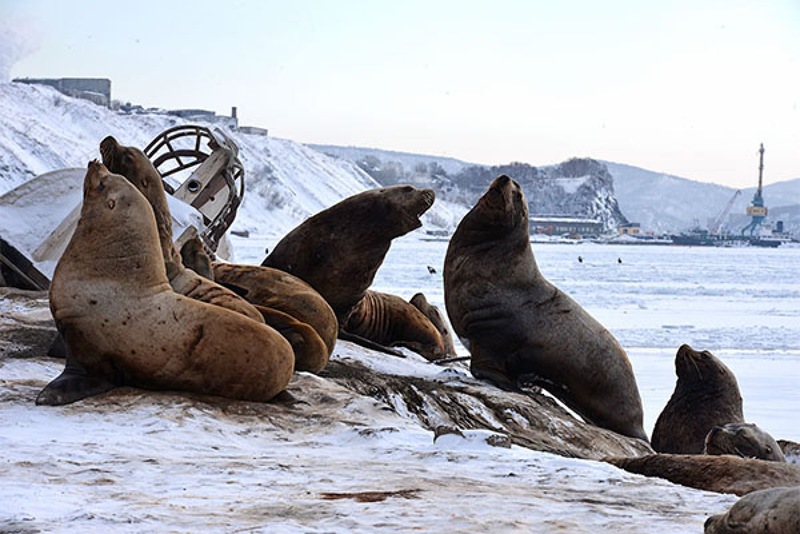About 80 red-listed sea lions are currently in the Petropavlovsk-Kamchatsky water area, remaining the object of close attention of specialists from the Kamchatka branch of the All-Russian Research Institute of Fisheries and Oceanography (KamchatNIRO). These marine mammals, listed in the Red Book, are forced to share urban space with humans, which poses many threats to them.

Scientists are constantly monitoring the animals at all their favorite recreation areas within the city: at the piers of Mokhovaya Bay, on the shore of the Petropavlovsk Bucket at the seaport and at Cape Chinook, located in the immediate vicinity of the city’s sewage treatment plants. These points are areas of close and often dangerous proximity of wildlife and human infrastructure.
Experts note that back in January-February of this year, the number of observed sea lions was higher and reached 140 individuals. However, the main concern is not only the reduction in the number of animals in the urban area, but also their physical condition. Sea lions that have become victims of irresponsible human activity are constantly found in the rookeries. A particularly depressing picture is observed at Cape Chinook, where four individuals were spotted literally trapped in a death trap – “collars” from abandoned or lost fishing nets. In addition, scientists regularly record animals with deep, serious wounds on their necks and backs, the origin of which is also likely to be related to anthropogenic impact, whether it is collisions with ships or entanglement in debris.
Sergey Kornev, head of the Marine Mammal Laboratory, explains that this winter in Kamchatka turned out to be abnormally mild and warm. According to his forecasts, this will lead to the sea lions leaving their “urban rookeries” earlier than usual, by about one to two weeks, that is, by mid-April. This means that the period of potentially dangerous proximity to humans for animals will be shortened this year, but before they leave, vulnerable red book giants can still be found in urban waters, which requires special care and responsibility from people.
Sergey Kornev says with undisguised concern that the most serious threat to the welfare of sea lions is precisely the thoughtless and selfish behavior of humans. He emphasizes that disorganized tourists and just curious people often show excessive importunity in pursuit of spectacular shots: they approach unacceptably close to rookeries, launch drones that cause panic in animals, and even try to feed them, rudely interfering with natural processes and endangering both animals and themselves. All this, according to the scientist, is the strongest stress factor forcing sea lions to leave their vital resting places. Of particular concern is the situation at Cape Chinook, where fans of SUP surfing, swimming too close to the rookery, provoke panic. Animals rush into the water en masse, a stampede occurs, which, as the specialist warns, can result in severe injuries and even the death of young, not yet strong individuals. Kornev recalls that the researchers themselves carry out all observations, accounting and photographing from a safe distance, often using special shelters or being behind fences to minimize animal anxiety. He urges all those who wish to see these unique marine mammals to be conscious and strictly observe the Rules for visiting rookeries and places where marine mammals congregate in the Kamchatka Territory, approved by the regional government. Respect for wildlife and its inhabitants should become the norm of behavior.